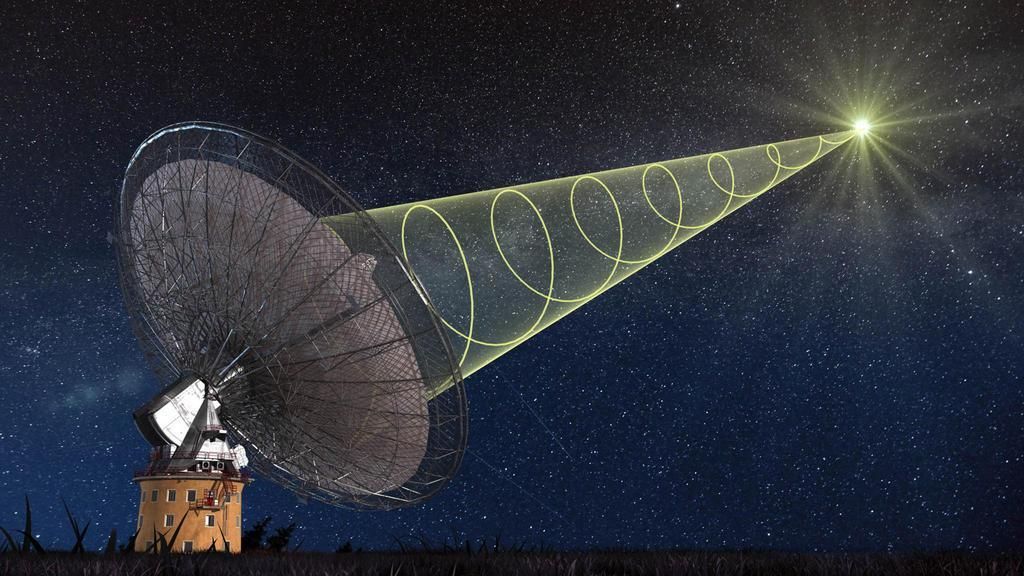Another Repeating Fast Radio Burst in Deep Space Has Been Found
Article by Fox News Channel June 12, 2020 (fox6now.com)
• After finding the first-known repeating fast radio bursts (FRBs) in February (see previous ExoArticle here), researchers have discovered another repeating FRB in deep space that has them baffled. According to a newly published study in the Monthly Notices of the Royal Astronomical Society, FRB 121102, which has been observed since 2016 by Britain’s Lovell Telescope, was discovered to have a 157-day repeating pattern. It shows activity for 90 days and then goes silent for 67 days.
• “Using the pulses detected in the Lovell data along with pulses from the literature, we report a detection of periodic behavior of the source over the span of 5 years of data,” according to the study. The deep space source is currently ‘off’, and it should turn ‘on’ again from June 2 to August 28, 2020.
• “This exciting discovery highlights how little we know about the origin of FRBs,” said a co-author of the study, Duncan Lorimer. “Further observations of a larger number of FRBs will be needed in order to obtain a clearer picture about these periodic sources and elucidate their origin.”
• The FBR found in February has a 16-day repeating pattern. It may be repeating due to it orbiting a compact object, for example, a black hole, causing its pattern to repeat, according to the study. It’s also possible that it could be coming from a binary star system, but more research is needed.
• It’s unknown how common FRBs are and why some of them repeat, while others do not. Their origins are also mysterious in nature. Some researchers speculate that FRBs come from an extraterrestrial civilization. But SETI (the ‘Search for Extraterrestrial Intelligence Institute’) says that because these FRBs come from all over space, “arranging cooperative alien behavior …seems unlikely.”
• The first (non-repeating) FRB was discovered in 2007. Some of them can generate as much energy as 500 million suns in a few milliseconds.
NEW YORK — After finding the first-known repeating fast radio bursts (FRBs) in February, researchers have discovered another repeating FRB in deep space that has them baffled.

FRB 121102, which has been observed since 2016 by the Lovell Telescope in the U.K., was discovered to have a 157-day repeating pattern. It shows activity for 90 days and then goes silent for 67 days, according to a newly published study in the Monthly Notices of the Royal Astronomical Society.
“Using the pulses detected in the Lovell data along with pulses from the literature, we report a detection of periodic behavior of the source over the span of 5 yr of data,” researchers wrote in the study. “We predict that the source is currently ‘off’ and that it should turn ‘on’ for the approximate MJD range 59002−59089 (2020 June 2 to 2020 August 28).”
It’s unclear what’s causing the pattern to repeat, leaving researchers to realize just how little they know about FRBs.
“This exciting discovery highlights how little we know about the origin of FRBs,” said one of the study’s co-authors, Duncan Lorimer, in a statement. “Further observations of a larger number of FRBs will be needed in order to obtain a clearer picture about these periodic sources and elucidate their origin.”
FAIR USE NOTICE: This page contains copyrighted material the use of which has not been specifically authorized by the copyright owner. ExoNews.org distributes this material for the purpose of news reporting, educational research, comment and criticism, constituting Fair Use under 17 U.S.C § 107. Please contact the Editor at ExoNews with any copyright issue.

